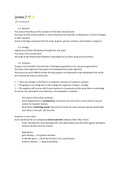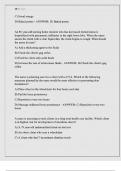Summary
Summary Biology, ISBN: 9781292341637 Genetics, Ecology and Evolution (WBBY005-05)
- Course
- Institution
- Book
This is a summary for the course Genetics, Ecology and Evolution to help you pass the exam. In this summary an overview is given about all the important topics, which were discussed during the lectures. Important concepts from the book can also be find in this summary. (some words are translated t...
[Show more]













